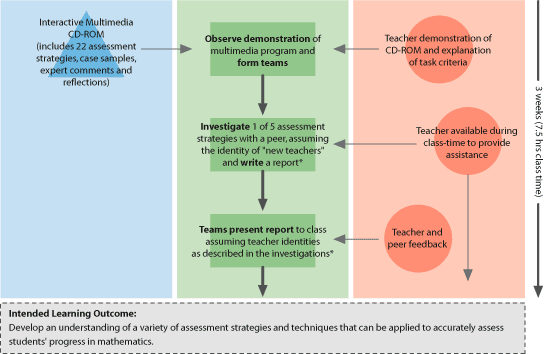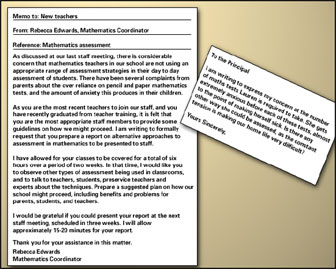|
ACCESSIBLE RESOURCES
The CD-ROM is the main resource students have access to. This
multimedia program has been designed to enable students to
examine a problem/investigation from a variety of perspectives.
Resources are available to students by clicking on elements
of the interface:

Strategy selection:
Students select an assessment strategy to investigate from
the white board. There are 22 to choose from.
Videos: Clicking on the video cases below the television
plays a video demonstration of the strategy filmed in a real
classroom, and an interview with a teacher and a student.
Descriptions: Clicking on the first drawer of the
filing cabinet gives students access to a description of the
selected assessment strategy.
Sample: The sample drawer includes work samples from
children who have used the assessment strategy.
Reflections: This drawer gives access to reflective
comments written by preservice teachers who have tried the
strategy while on professional practice.
Experts: The final drawer gives access to expert comments
on the strategy.
RESOURCES IN CONTEXT
The CD-ROM resource (or web-based versions of the resources)
is important because it enables users to make their own judgements
about these strategies based on: observing the strategies
in use in regular classroom environments, hearing comments
by practising teachers and their students, and reading the
reflections of experts in the field as well as novice pre-service
teachers.
VARYING THE RESOURCE SET
The multimedia program forms the crux of the learning setting.
Without it, the two activities could not be conducted in such
a short time frame as student would need to research the different
types of assessment strategies available and would not have
the opportunity to examine these assessment strategies from
a variety of perspectives.
|


